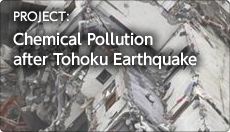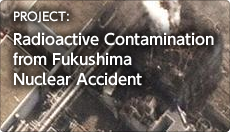
Unique Features of the Japanese PRTR
Unique Features of the Japanese PRTR
(1) Estimated Releases Outside Notification
When the Japanese government looked at the introduction of a PRTR system, the government accepted expert opinion that there were many sources of toxic substances besides those from large factories, as evidenced by environmental monitoring data since the 1970s. Hazardous substances are released not only from industrial operations run by larger BOs, but also from a myriad of often quite small sources such as rice fields,households and roads. These are known as “Non-Point Sources” (NPS), and can be significant sources of hazardous substances when viewed as a whole.
Thus a unique feature of the Japanese PRTR is that the national government calculates amounts of listed substances released from BOs without reporting requirements and from NPSs.
For example, farmers use a large amount of pesticides and herbicides. However,because most Japanese farms are small and run by two or three family members only it was decided not to impose reporting duties. Construction sites are not regarded as sources for reporting purposes because it is rather rare that work continues for a whole year or more. The exhaust fumes from automobiles are also a major source of toxic substances. Therefore the current system includes such sources as “Estimated Releases Outside Notification”.
Although the government looked at the possibility of including estimations of transfer
amounts, this did not come about due to a lack of statistical data necessary for
estimation.
Chart 2 shows some of the scope of these “Estimated Releases Outside Notification”,which also include estimates for smaller point sources such as non-listed industries which are not required to submit reports. Even so, this misses some well-known pollutants – for example, nitrogen and phosphorus releases from agricultural activities are not included.
The national government also estimates released amounts of hazardous substances from mobile sources including automobiles, railways, ships and etc., and discloses the results for each prefecture.
The “Estimated Releases Outside Notification” cover releases from the following BOs and NPSs (6):
(i) BOs of listed industries but which handle quantities of Class I substances below the reporting thresholds (generally five metric tonnes per year for the first two years one ton per year thereafter), or which have fewer than 20 employees;
(ii) BOs of non-listed industries such as golf courses and farms which use pesticides,construction industries which release volatile substances such as toluene, xylene and formaldehyde from adhesive agents and paints, and restaurant businesses which use detergents;
(iii) households, which are sources of toxic substances in pesticides, detergents,deodorants and insect repellents;
(iv) mobile sources such as automobiles, ships and planes, which release volatile organic carbon compounds (VOCs) in exhaust gases.
The national government publishes an annual report on the methods of estimation at the same time that the PRTR data is published (6). The methods of estimation are reviewed annually by an expert committee in order to improve accuracy and reliability.
Chart 2. Composition of targeted substances for estimation and/or aggregation
Source: MOE (6)
(2) Obligation to provide Material Safety Data Sheets (MSDS)
The Act also provides that BOs shall produce and furnish MSDS when products containing Class I and II designated chemical substances are sold or transferred to other BOs. Since 2010 BOs must document and disclose the hazards in accordance with the UNECE Globally Harmonized System of Classification and Labelling of Chemicals(GHS).


